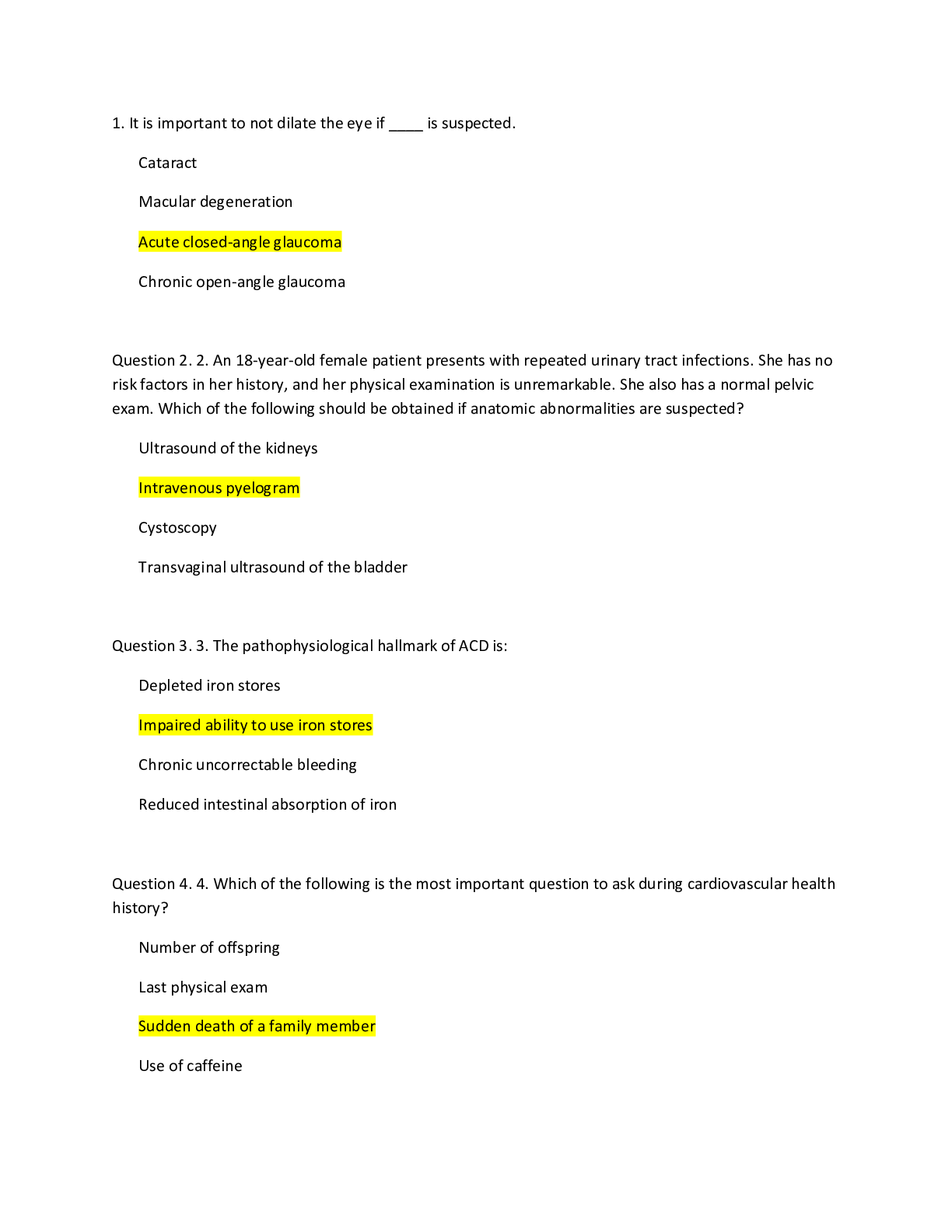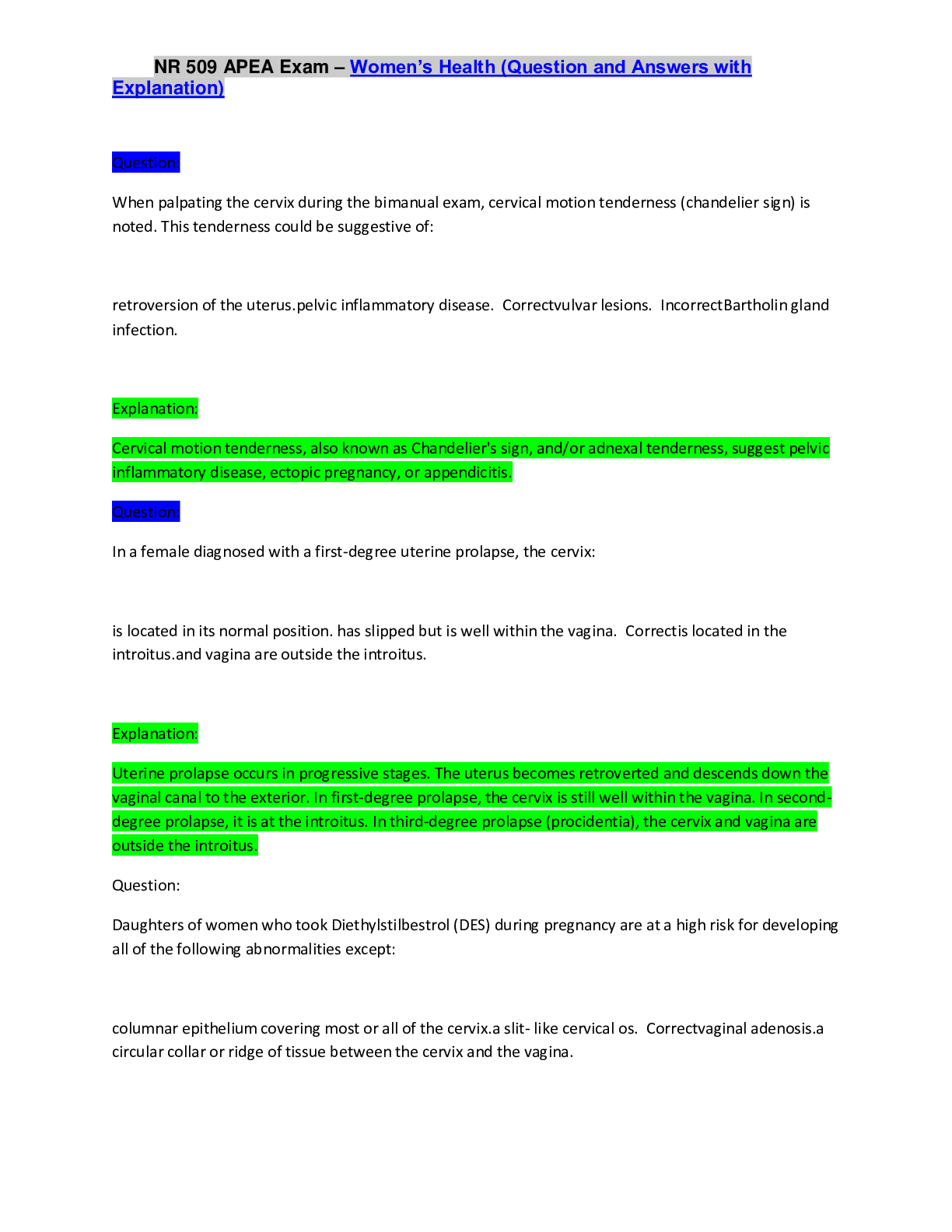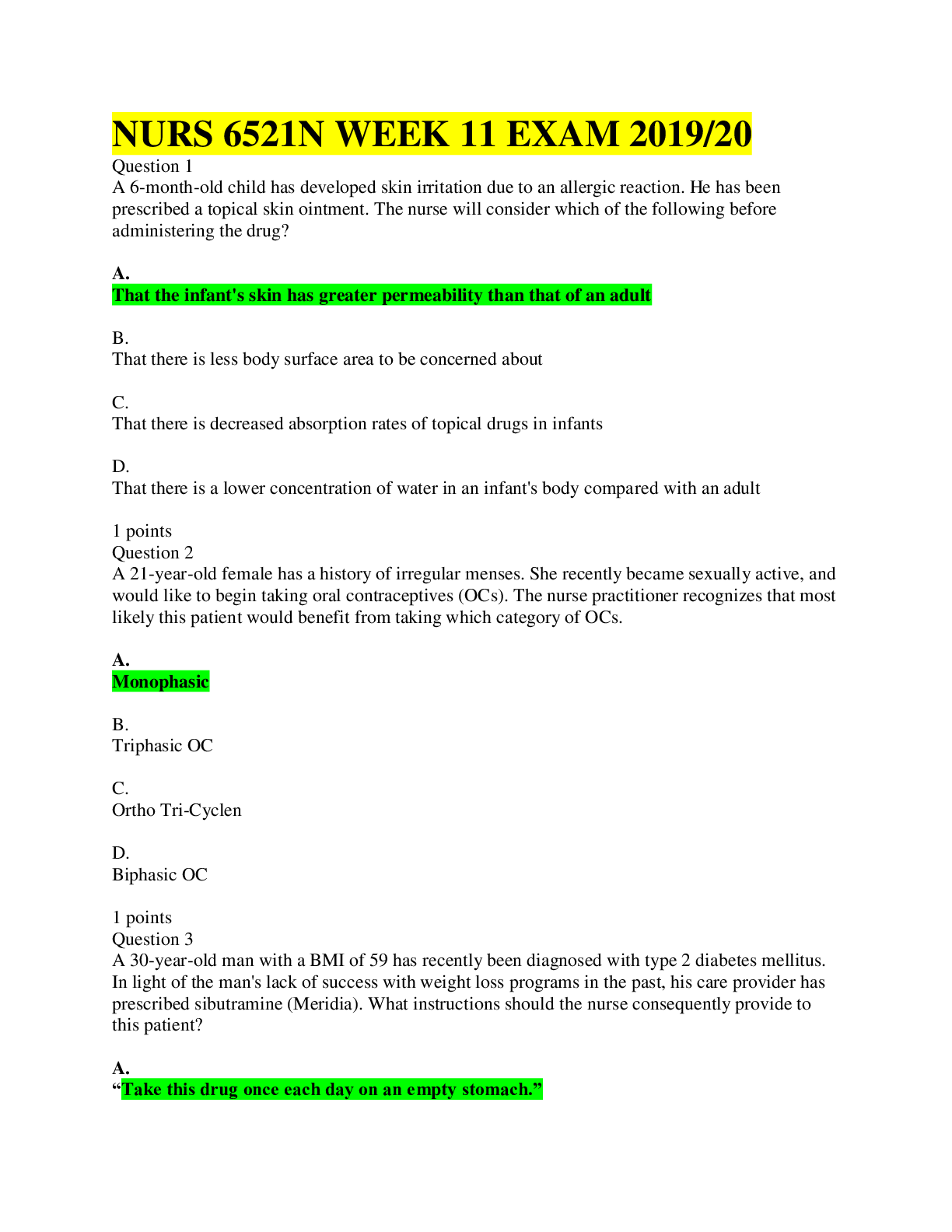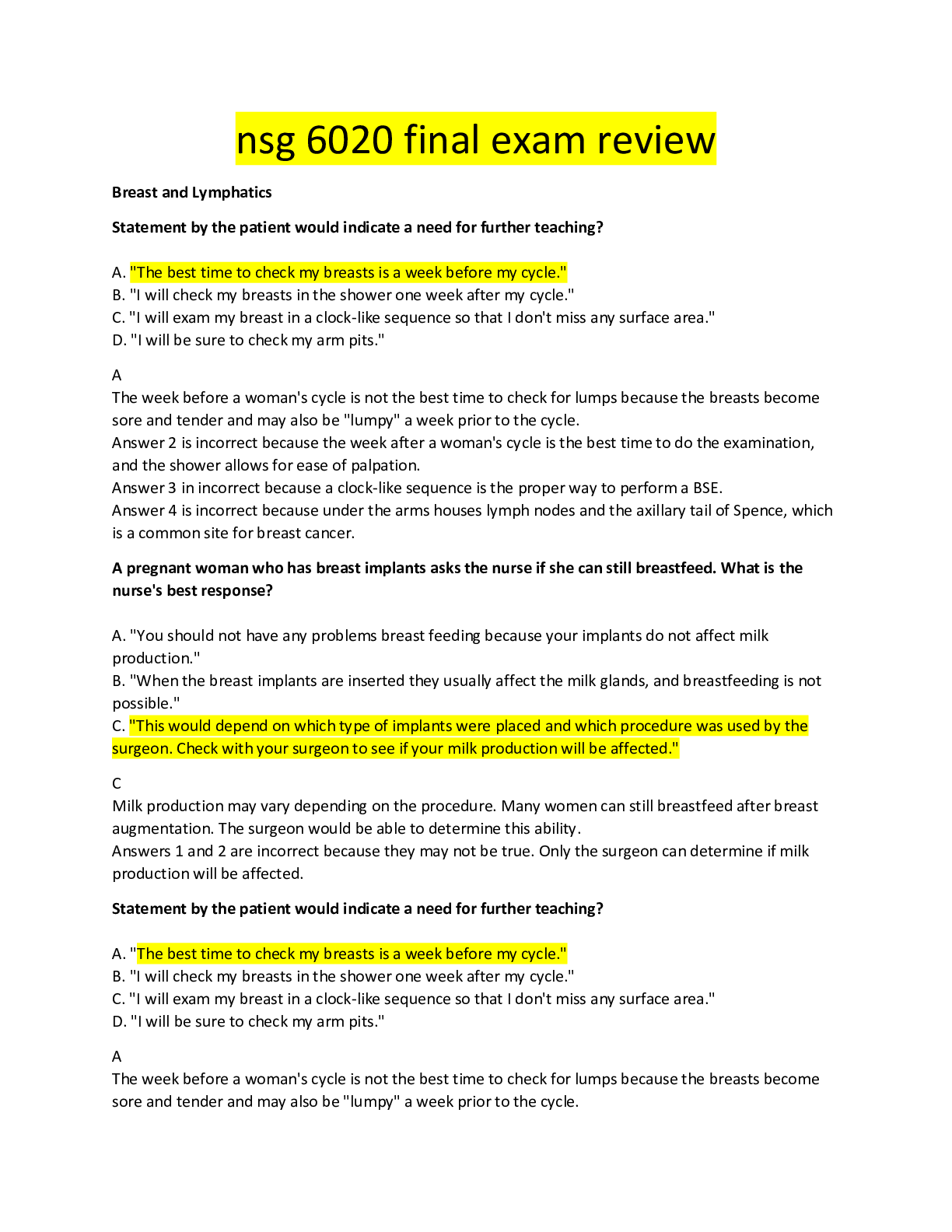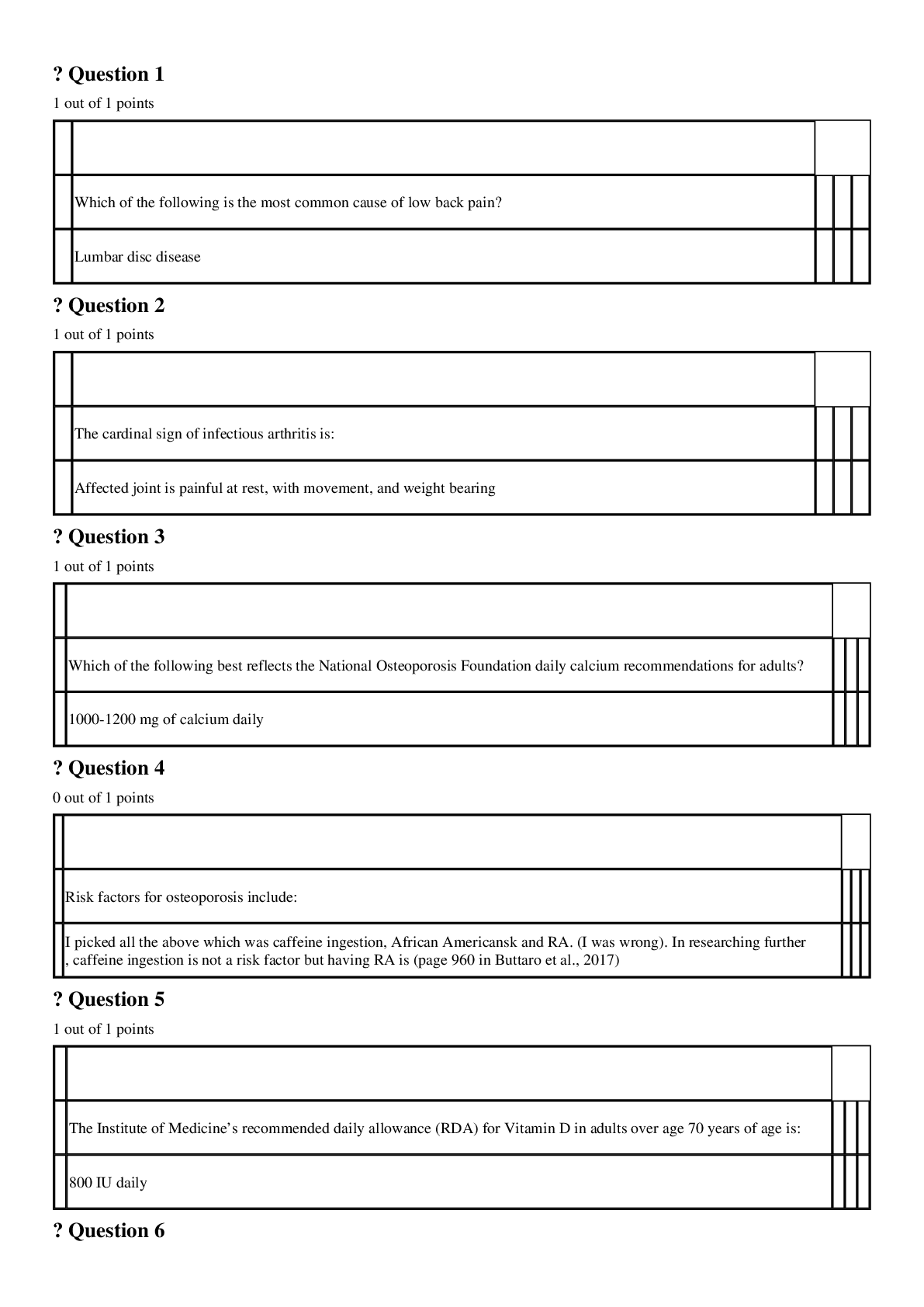Physics > EXAM > Virtual Lab: Projectile Motion. PHYS 1405 Lab 9 Projectile_Motion_2021. (COMPLETE SOLUTIONS) ALL COR (All)
Virtual Lab: Projectile Motion. PHYS 1405 Lab 9 Projectile_Motion_2021. (COMPLETE SOLUTIONS) ALL CORRECT ANSWERS
Document Content and Description Below
Virtual Lab: Projectile Motion Name(s): Date: Please use a font color other than black, red or green. Theory: A projectile is an object that moves in two dimensions, in other words, it moves vert ical... ly and horizontally at the same time. A special characteristic of a projectile is that its motion in the vertical direction is independent of its motion in the horizontal direction. If air resistance is small enough to be ignored, then the only force acting on a projectile after launch, is the vertical force of gravity. Therefore, in the absence of air resistance, the horizontal component of the projectile’s velocity does not change. In the vertical direction, the force of gravity causes a constant downwards acceleration of 9.8 m/s2. The projectile’s motion in the vertical direction can therefore be analyzed using kinematic equations that are based on constant acceleration such as: y=y0+v0 yt− 12 g t2[Equation1] where: y = change in height of the projectile (in meters) y0 = initial height of the projectile (before it was launched) voy = initial velocity of the projectile in the vertical direction g = acceleration due to gravity (9.8 m/s2). We put a negative sign in front of g to indicate that we have chosen upwards as the positive direction, and g is directed downwards. t = time in seconds since the launch of the projectile Projectile motion is seen when you throw a ball across to someone, when you hit a baseball or a tennis ball, when water emerges out of a fountain and so on. If a projectile is launched at an angle, we can use trigonometry to find its starting velocities in the horizontal and vertical directions. The figure below explains how.Fig 1. Velocity components and the trajectory of a projectile Fig. 1 shows a red ball being launched with an initial or starting velocity of v0 meters per second at an angle of measured from the horizontal. This initial velocity can be broken down using trigonometry into its horizontal component (v0cos ) and its vertical component (v0sin). After finding the vertical and horizontal components, different kinematic equations can used to accurately predict the projectile’s path or trajectory. If air resistance is small enough to be ignored (generally the case for a small, heavy ball), then the velocity in the horizontal direction does not change and it is calculated using the equation: Horizontal velocity = v0x = v0cos [Equation 2]. Since the horizontal velocity is constant, we can write another useful equation involving velocity, distance traveled in the given direction (which is the displacement), and time: Horizontal velocity=v0cosθ=Distance time [ Equation3] On the other hand, for motion in the vertical direction, we can derive a useful equation by rearranging equation [1] and substituting v0y = v0sin (from Fig. 1) to get: Launcher v0cos v0sin v0 Range Maximum height Parabolic trajectory Initial heightv (¿¿0 sinθ )t−1 2 g t2[ Equation 4] −h=¿ Here the “-h” is the change in height of the projectile (the height of the floor, which is zero meters, minus the initial height, which is h meters). Let us look at an example to see how these equations come in handy: Example 1: A projectile is fired at an angle of 0 with an initial velocity of 3 m/s. It is launched from a height of 1 meter above the floor. How far will it travel? Solution: We are given the following information: = 0 v0 = 3 m/s h = 1 m We are asked to find the distance traveled (or the range) in meters. We could use equation [3] to find the range, but we do not know the time the projectile takes to hit the floor. Therefore, we will first have to find the time using equation [4] and then use that time in equation 3. The time the projectile takes to travel the vertical distance to the floor is the same as it takes to travel the horizontal distance before hitting the floor. Equation 4 is: v (¿¿0 sinθ )t−1 2 g t2[ Equation 4] −h=¿ substituting the given values and using g = 9.8 m/s2, we get: -1 = (3)(sin0)t – ½(9.8)(t2) The sine of 0 is 0, therefore the whole sin term goes away, leaving us with: -1 = - ½(9.8)(t2) Rearranging this to get t2 on one side we get: t2 = 2/9.8Taking the square root on both sides we get: t = (0.2041) t = 0.45 seconds. Now that we have the time, we can substitute it into equation [3] to find the distance: v 0 cosθ= Distance time [Equation3] Substituting values we get: (3)(cos0)= Distance 0.45 The cosine of 0 is 1. Therefore we get: 3= Distance 0.45 which gives us: Distance=(3)(0.45) Distance=1.35 m The projectile will travel a distance of 1.35 meters in the horizontal direction before it hits the floor. We could also say that the range of the projectile is 1.35 meters. Videos: Please watch these short videos for a review: [Show More]
Last updated: 1 year ago
Preview 1 out of 9 pages
Instant download
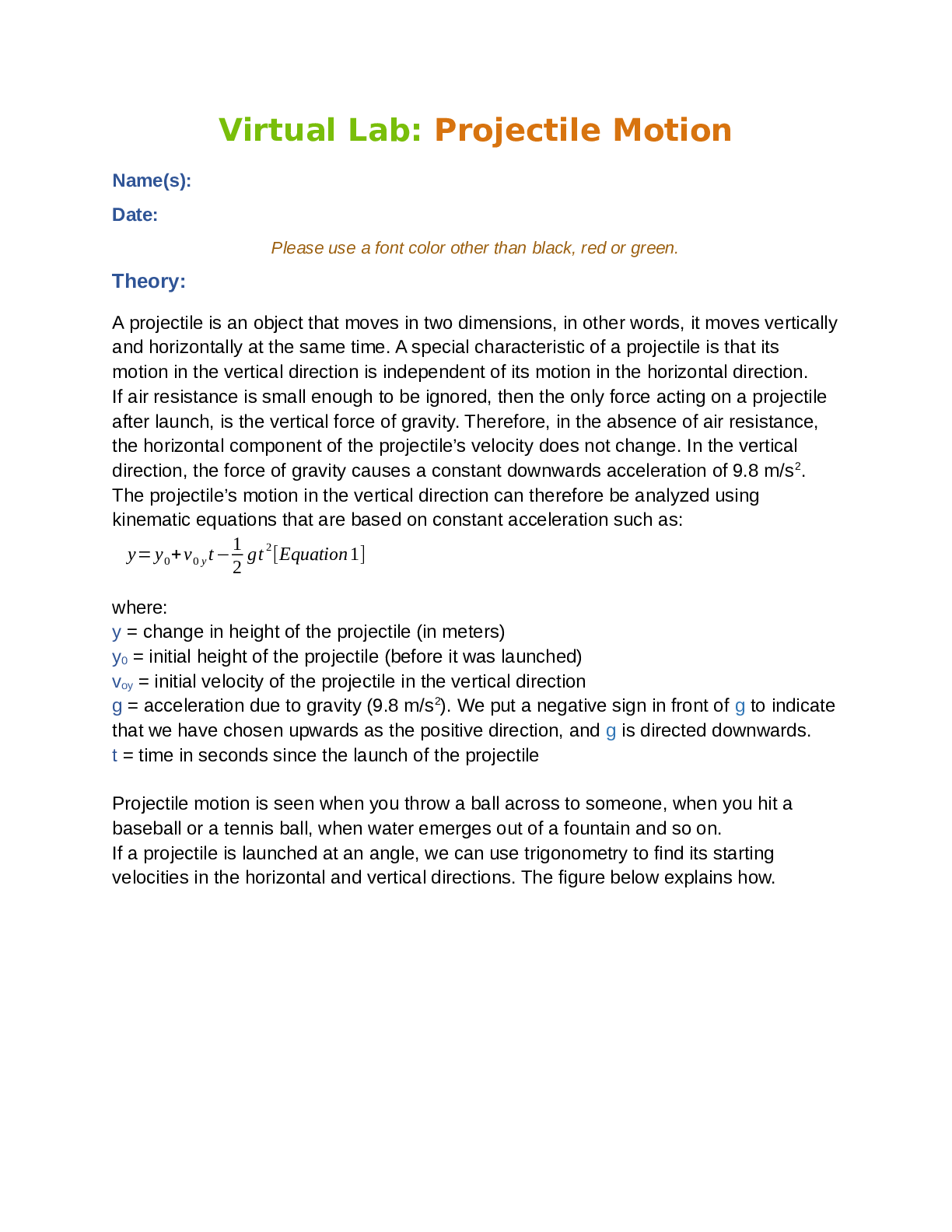
Buy this document to get the full access instantly
Instant Download Access after purchase
Add to cartInstant download
Reviews( 0 )
Document information
Connected school, study & course
About the document
Uploaded On
Apr 02, 2021
Number of pages
9
Written in
Additional information
This document has been written for:
Uploaded
Apr 02, 2021
Downloads
0
Views
56


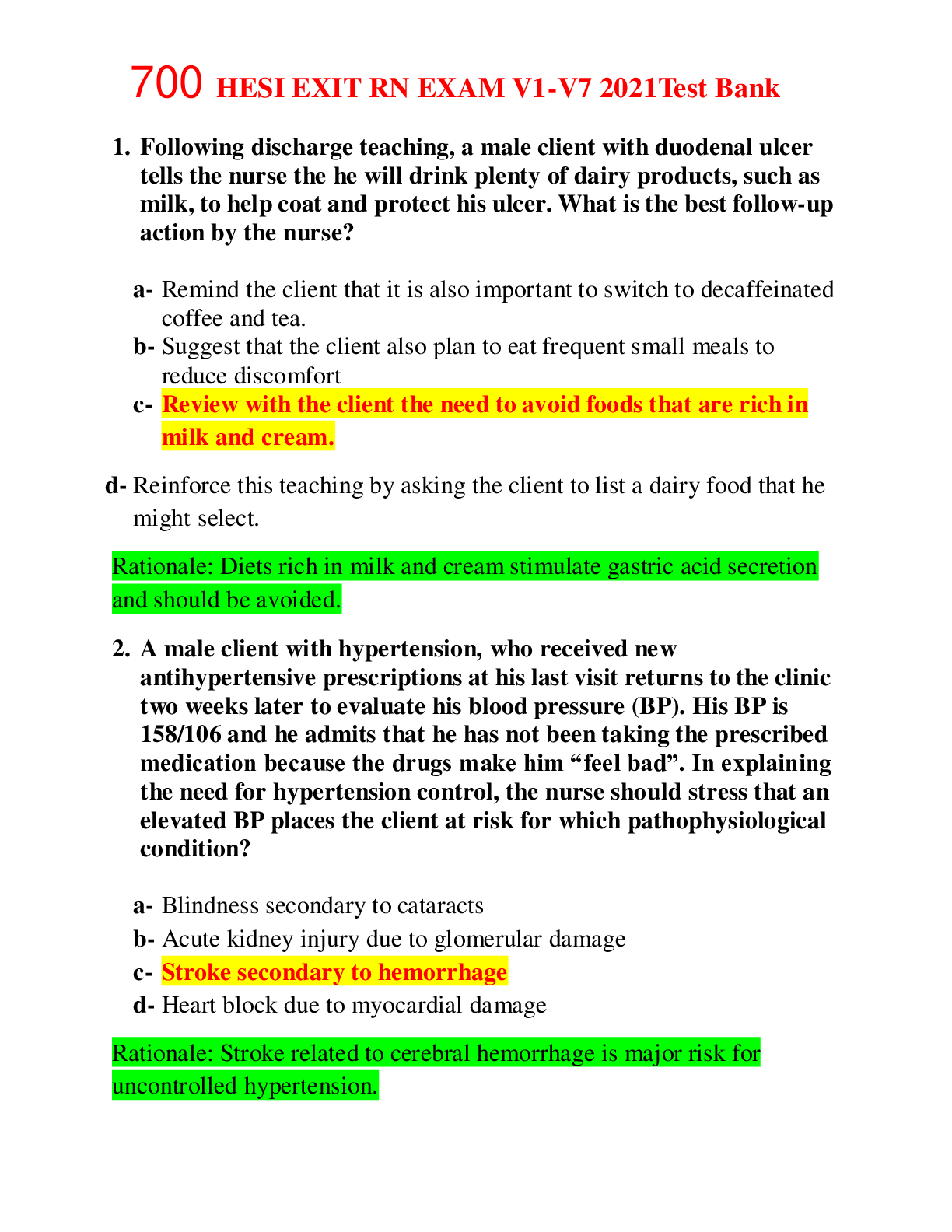

.png)







